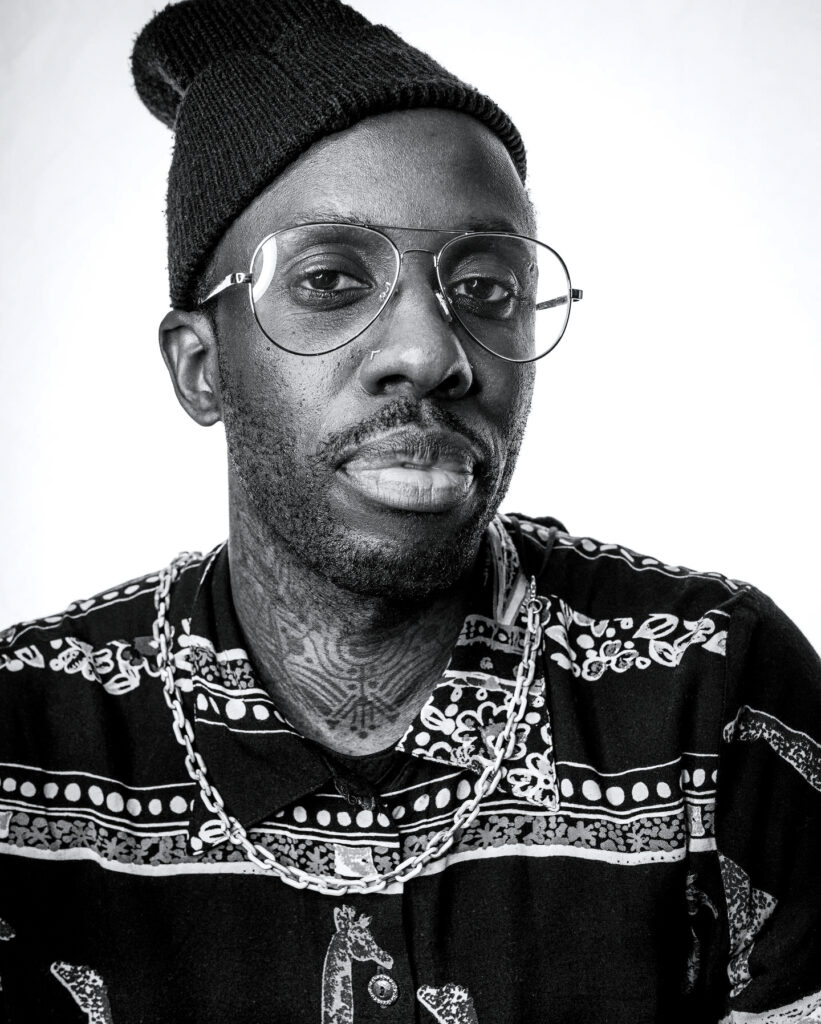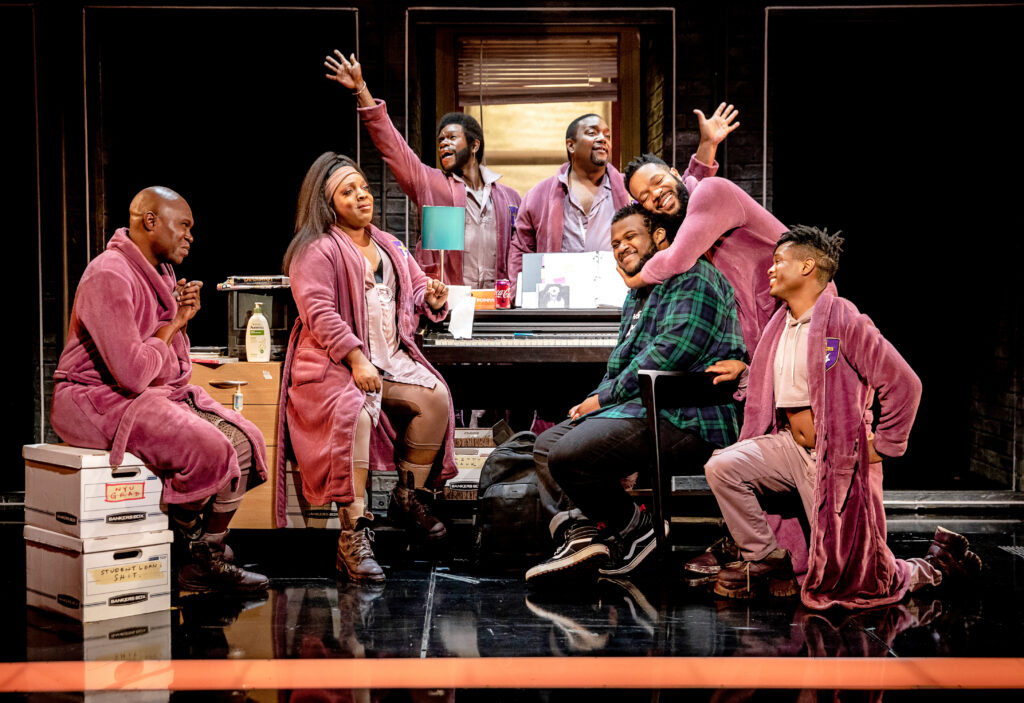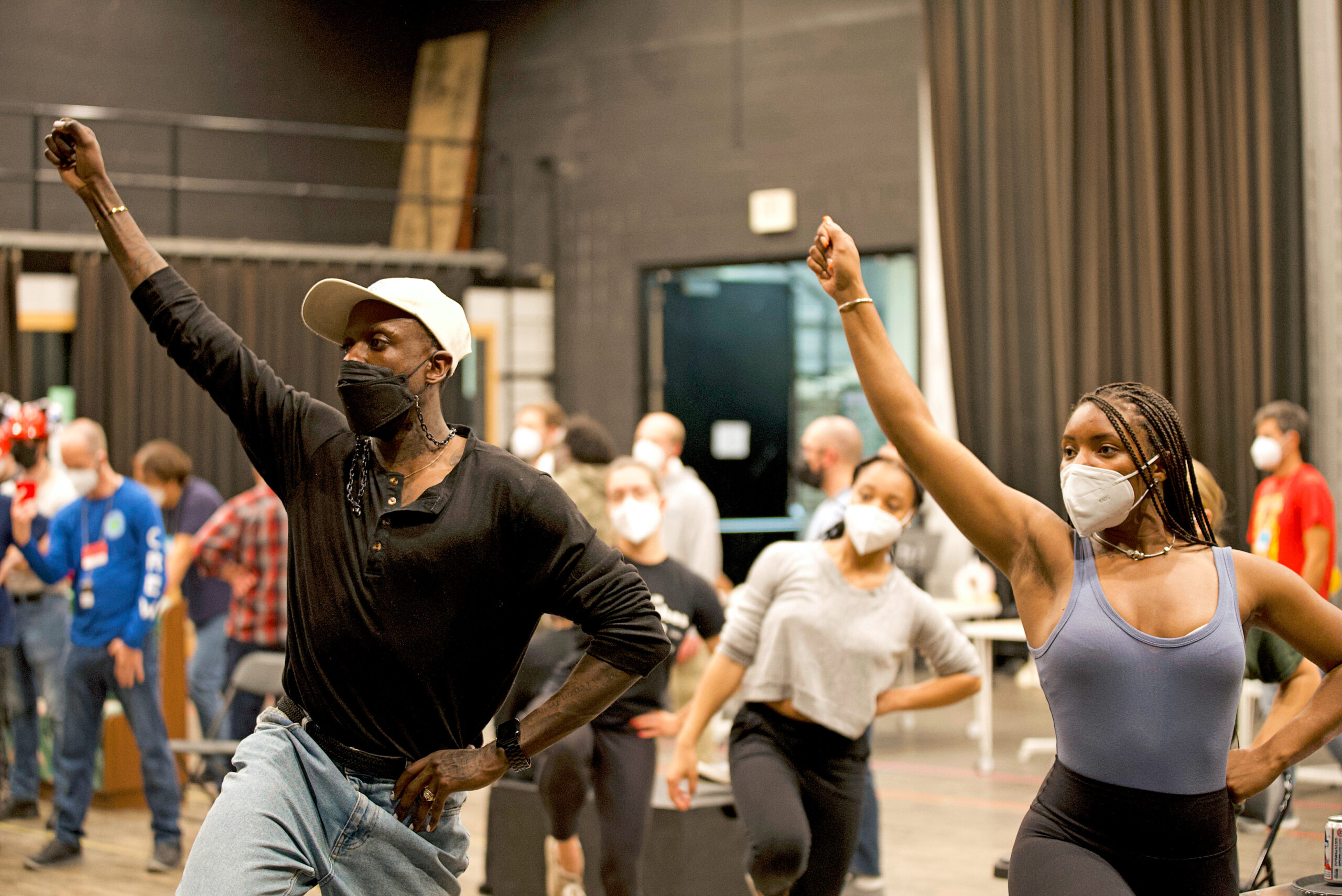Raja Feather Kelly is “Delightfully Scared” About the New Musical White Girl in Danger
The only thing Raja Feather Kelly’s workplaces have in common is how different they are. The director and choreographer’s credits in the past year include the Pulitzer Prize and Tony Award–winning talk of Broadway (A Strange Loop), the West Coast debut of a musical about a Polish painter (Lempicka), the reimagining of a Gounod classic at Detroit Opera (Faust), a concert dance premiere for Salt Lake City’s contemporary Ririe-Woodbury Dance Company (Scenes for an Ending) and a short ballet for seven dancers, created through the New York Choreographic Institute (Starlings). Kelly runs a dance-theater-media company, the feath3r theory, out of Brooklyn, and, this spring, White Girl in Danger reunites him with Michael R. Jackson, who wrote A Strange Loop’s book, music and lyrics. A co-production of Vineyard Theatre and Second Stage Theater, the new musical officially opens off-Broadway this month.
Where am I catching you?
I’m in San Diego. I was working on a show last summer with Rachel Chavkin called Lempicka at La Jolla Playhouse. I’m now at the Potiker Theatre, next door to the Playhouse, working on a show of my own called Bunny Bunny.

I’m glad you brought up Lempicka. I wanted to ask about the difference between looking at someone’s life in all its complexity, and at more limited source material, like the film Dog Day Afternoon, which inspired the feath3r theory’s show Wednesday.
Actually, our show Wednesday was also about a real person named Elizabeth Debbie Eden. Everyone knows Dog Day Afternoon as this work of cinematic genius, whereas no one knows about Elizabeth Debbie Eden. There was an opportunity to center this incredible trans woman, whose story was much erased, even though, without her, there would be no Dog Day Afternoon.
So Lempicka and Wednesday aren’t as different as I thought.
No, and, in fact, that sort of gets at the thing that inspires me most, or that I will probably always wrap my head around, which is—and this is why I like Andy Warhol—how a person becomes a concept, how a concept becomes a culture, how culture becomes a system or an iconography. We become all-consumed by ideas, when ideas just come from people.
You’ve charted that process through various terrain.
Yeah, and, in the case of A Strange Loop, that’s also about a person, but then it expands to that person’s thoughts, and their thoughts’ thoughts, and their thoughts’ thoughts about the person. What becomes exciting about choreography is people’s behavior—the idiosyncrasies that become movement motifs that become phrases that become choreography. To bring it back to Tamara de Lempicka: She was very particular about the way she held her body, what we know in ballet as épaulement. That’s just something she did naturally—and it’s in all of her paintings.

What changes when the source is text—say, by Michael R. Jackson or Aleshea Harris, whose play On Sugarland you choreographed?
Well, Aleshea is a person who has an inherent and insatiable desire for movement. I feel connected to many writers, but with her work, I’m like: “Without question, I understand it.” When On Sugarland was in one of its first iterations, I remember people saying, “What is this play? What does it mean? What’s going on?” Our collaborations have really been a sort of translation. [Jackie Sibblies Drury’s] Fairview is another play that’s unconventional in that it isn’t really complete on the page. These plays require bodies to come to life. They need scores and logic that can only be created by movement. Formulas and conventions come up so often because they work, and many of the people that I work with—I’m thinking of Aleshea, Jackie, Michael, Branden Jacobs-Jenkins—are interested in breaking that apart, and that breaking-apart is an embodied practice.
Now that A Strange Loopis an acclaimed reality, what possibilities are open for White Girl in Danger?
I think the ambition of White Girl in Danger might even be more than A Strange Loop. I’m particularly excited because there’s an ’80s and ’90s nostalgia to it that comes from soap opera, and yet it’s topical. White Girl in Danger also reflects the tropes and archetypes and humor and formulas and absurdity of reality TV, and takes all of those too far. I’m excited to flex my creative muscles to find a concept that can live through all of those things. I’m delightfully scared, like, I don’t know how to do it, which is both a great place to be and the scariest place to be. Michael and I share, and have committed to one another, a promise of integrity. Go hard or go home.
Integrity comes up frequently in your interviews. You also mention ambition a lot. What, for you, is the relationship between them?
I didn’t know who I was or what I wanted to do until a teacher of mine, Vincent Borelli, put a script in my hand and said, “Do something with this.” So, part of that is having met someone who was able to show me to myself. He was so adamant about us understanding what integrity meant, which was a commitment to learning, to translating, to doing what you say you’re going to do, with no frills and no game-playing.
So is it fair to say that, for you, ambition is less a desire for achievement or validation and more the potential of an opportunity?
One hundred percent. I want to be the best artist I can be, and my pact with the people I work closely with—Aleshea, Branden, Michael, Lileana [Blain-Cruz, director of Faust and White Girl in Danger]—is that we are watching each other and will hold ourselves to that standard. We might get accolades, and those are great, but, like, is the work any good? Somebody once told me, “Just make your work for the four people who are going to tell you whether you’re doing the thing you said you would or not. Everyone else just gets to participate.”




